 Mysteries
Mysteries  Mysteries
Mysteries  History
History 10 Surprising Stories About the Texas Rangers
 Humans
Humans 10 Philosophers Who Were Driven Mad by Their Own Theories
 Miscellaneous
Miscellaneous 10 Video-Game-Worthy Weapons and Armors from History
 Weird Stuff
Weird Stuff 10 Psychics Who Accurately Predicted Wartime Events
 The Arts
The Arts 10 Pieces of Art Inspired by a Broken Heart
 Health
Health 10 Science Fiction-Sounding New Medical Treatments
 History
History 10 Surprising Facts About the Father of Submarine Warfare
 Space
Space Ten Astonishing New Insights into Alien Worlds
 Weird Stuff
Weird Stuff 10 Bizarre Summer Solstice Rituals Still Practiced Today
 Mysteries
Mysteries Top 10 Haunting Facts About the Ghost Ship MV Alta
 History
History 10 Surprising Stories About the Texas Rangers
 Humans
Humans 10 Philosophers Who Were Driven Mad by Their Own Theories
Who's Behind Listverse?

Jamie Frater
Head Editor
Jamie founded Listverse due to an insatiable desire to share fascinating, obscure, and bizarre facts. He has been a guest speaker on numerous national radio and television stations and is a five time published author.
More About Us Miscellaneous
Miscellaneous 10 Video-Game-Worthy Weapons and Armors from History
 Weird Stuff
Weird Stuff 10 Psychics Who Accurately Predicted Wartime Events
 The Arts
The Arts 10 Pieces of Art Inspired by a Broken Heart
 Health
Health 10 Science Fiction-Sounding New Medical Treatments
 History
History 10 Surprising Facts About the Father of Submarine Warfare
 Space
Space Ten Astonishing New Insights into Alien Worlds
 Weird Stuff
Weird Stuff 10 Bizarre Summer Solstice Rituals Still Practiced Today
10 Extraordinary Cases Of Biological Mimicry
Biological mimicry is when ones species evolves to look like another. Sometimes, one organism will additionally take on the behavior and mannerisms of the other. They end up looking so similar that it is difficult to tell them apart, even though they are totally unrelated.
Animals do this for many reasons. Often, it has to do with predation. Some prey animals take on the look of some other, more dangerous animal that their own predators avoid. Conversely, a predator may mimic an animal that its prey doesn’t fear.
10 Hornets And Hornet Moths
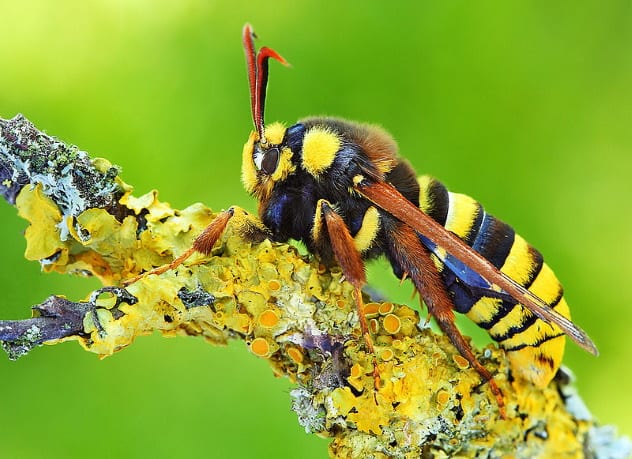
We all know hornets can deliver quite painful stings. Several species belonging to the Sesia genus, such as Sesia apiformis, have evolved to mimic hornets in look and behavior. These copycat moths are called hornet moths, for obvious reasons.
S. apiformis has the distinctive yellow and black markings of a hornet. It is also around the same size as a regular hornet and has a similar wingspan. The moth has also learned to take off in a haphazard manner, just as a hornet would, the moment it spots a threat.
There are a few differences between the hornet and hornet moth, though. The moth is yellower than a hornet and lacks a waist, even though hornets have waists in between their thoraxes and abdomens. The wings of the moth are also transparent. This last part only becomes discernible in flight, and most people and animals do not hang out long enough to find out, anyway.[1]
9 Ladybirds And Ladybird Spiders

Spiders are so amazing they have a popular fictional superhero named after them. The ladybird (aka ladybug) is special, too. It does not have its own superhero, but it does have real spiders named after it. These spiders belong to the genus Paraplectana. They are a group of spiders that have evolved to look like like ladybirds.
The mimicry is necessary, considering that many predatory birds avoid ladybirds. This is because ladybirds contain toxic chemicals that emit a terrible odor when crushed and leave a nasty, lingering taste in the mouth of the bird. This had made many birds develop a strong distaste for the ladybird. Aside from spiders, a few other insects, like the ladybird-mimic fungus beetle, have also evolved to look like ladybirds.[2]
8 Jumping Spiders And Metalmark Moths
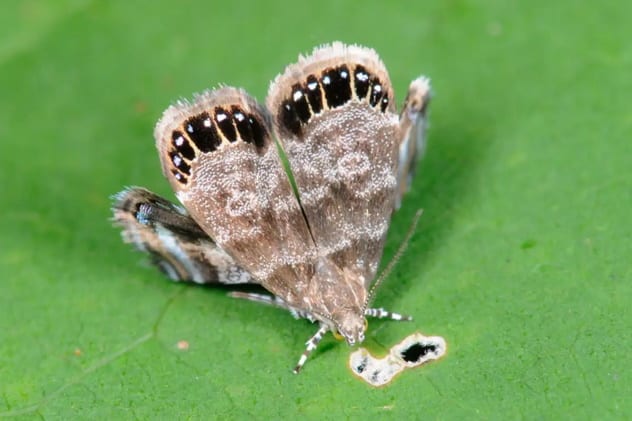
The metalmark moth (Brenthia coronigera) does not mimic just any random insect or spider but its predator, the jumping spider. The moths are so good at mimicry that jumping spiders mistake them for other jumping spiders. Smaller jumping spiders even flee from the moths over fears that they could be eaten.
The metalmark moth doesn’t just resemble the jumping spider in looks. It also moves in a manner resembling jumping spiders instead of just fluttering around like most moths do. Male jumping spiders get so fooled that they become attracted to the moths and display courtship behavior by raising their two front legs toward the moth.
Researchers who have studied the effectiveness of this mimicry say the moth needs to have its wings in the right position for the ruse to be effective. The black dots on its wings resemble a jumping spider’s eyes, while the rest of it mimics the spider’s body. Several experiments indicate that the spider will recognize the moth as prey if it does not display its wings or if any part of it is concealed.[3]
7 Ants And Spider Ants
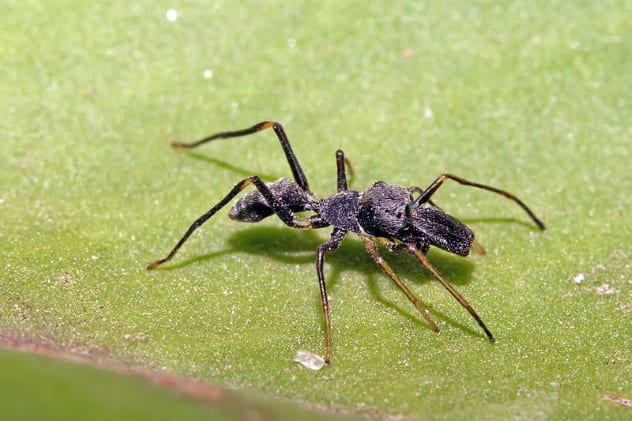
Ant mimicry (also called myrmecomorphy) is found in quite a few spider species. In fact, about 300 species of spiders take on the appearance of one ant or another. The mimicry serves two purposes. One is to deceive the ants, and the other is to deceive its predators, which will usually avoid ants.
These copycat spiders have spots that resemble the compound eyes of ants. They also have reflective hairs that make their thorax and abdomens look like those of ants. Most even walk in zigzag manners as an ant would. To appear more convincing, they make periodic stops and move their two front legs close to their heads to imitate an ant’s antennae.
Spiders like the ground spider mimic ants to deceive other ants. The spider hunts and kills isolated ants before dragging the body off while pretending to be just another ant trying to help the dead ant. The crab spider does the same thing, except that it drags the ant with a web. This allows it an easy escape if its ruse is discovered.
Other spiders mimic ants to avoid getting eaten by ants, spiders, and birds that consider them prey. These spiders also behave like ants to confuse their predators. They even build their nests close to the ants they mimic. This works because ants regularly fight off larger predators despite their smaller size. These predators have learned to avoid the ants—along with spiders disguised as ants.[4]
6 Rove Beetles And Army Ants
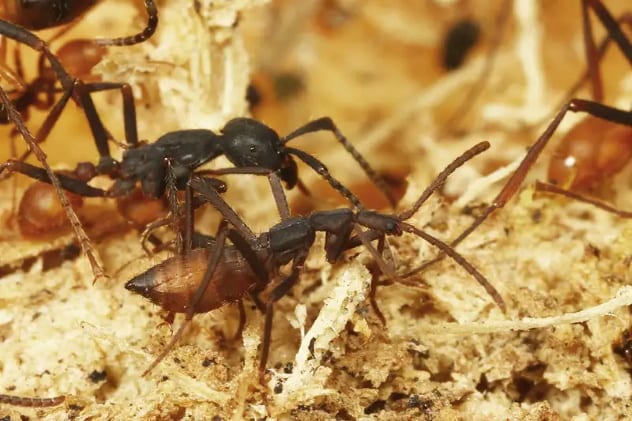
About 12 species of parasitic rove beetles are currently looking like one species of army ant or another. Most army ant colonies have one rove beetle per 5,000 army ants. The rove beetle does this to gain access into the ant colony, where it feeds on the ants’ larvae.
Their bodies have evolved to the point where they look so much like the real thing that even humans cannot tell them apart at a glance. Army ants cannot either, even when they touch the beetles, as they often do.
To be clear, most army ants are blind and actually recognize their colony mates through chemical and tactile cues. The beetles have this covered, too. They clean other ants just to get access to the chemicals the ants use for identification. This makes the beetles undetectable, even by scent. To appear more convincing, the rove beetle participates in every activity with the ants and even follows them on raids.
Scientists say the resemblance between both creatures is fascinating, considering that their last common ancestor was 105 million years ago. That is a really long time, even for evolution. Most creatures with similar characteristics diverged much more recently. In fact, 105 million years ago is when our distant evolutionary ancestors diverged from mice.[5]
5 Blue Streak Cleaner Wrasses And False Cleanerfish
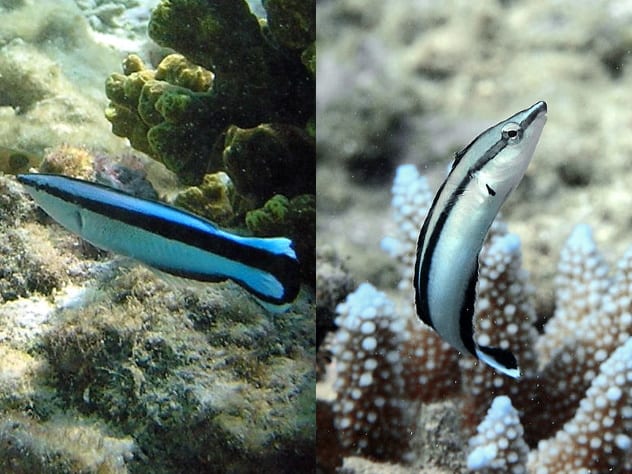
As you should have guessed from the name, cleaner fish strip other fish clean of harmful and parasitic organisms on their bodies. The relationship is considered mutually beneficial. The cleaner fish get food, while the fish that get cleaned are saved from harmful parasites.
The blue streak cleaner wrasse (Labroides dimidiatus, left above) is one of the many cleaner fish around. However, the false cleanerfish (Aspidontus tractus, right above) has evolved to look like the blue streak cleaner wrasse. Both fish look and behave so similarly that they are hard to tell apart.
The false cleanerfish runs fake cleaner stations about a meter away from the blue streak cleaner wrasse’s real ones. Sometimes, it even has a couple of real cleaner wrasses around just to appear more convincing. When an unsuspecting fish comes in, the false cleanerfish pretends to be cleaning before biting off a chunk and darting away.[6]
4 Pit Vipers And Hawk Moth Caterpillars
Hemeroplanes triptolemus is a hawk moth that lives in the forests of Central America. The caterpillar of the species is capable of mimicking pit vipers to send would-be predators fleeing. When threatened, the caterpillar faces the aggressor as a true pit viper would. Then it withdraws its legs and extends the front of its body in such a way that it puffs up to resemble the head of a pit viper.
To complete the mimicry, the caterpillar mimics viper-like curves, scales, and eyes. For lifelike effects, it also throws jabs like a real viper. The appearance is so convincing that it even fools humans. Birds and other caterpillars trying to eat this caterpillar don’t hang around long enough to wonder where the rest of the “viper’s” body went.[7]
3 Common Wasps And Marmalade Hoverflies
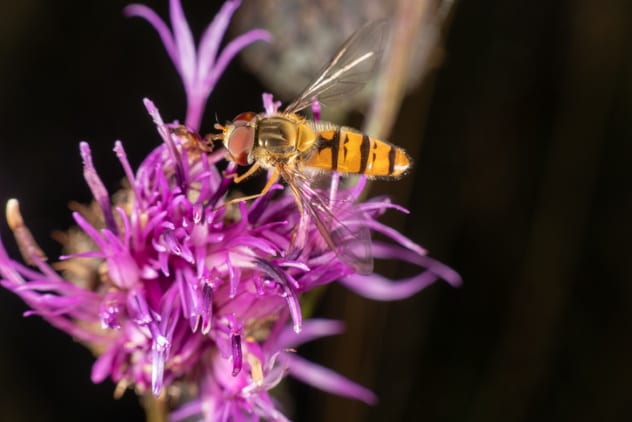
The marmalade hoverfly (Episyrphus balteatus) is often confused with the common wasp (Vespula vulgaris, also called the common yellow-jacket) because of their similar body coloration. Both have black and yellow markings, which make them indistinguishable to their predators and even humans. They look so alike that quite a few people screamed and fled when marmalade hoverflies swarmed several British beaches in 2004.
The common wasp got the color first. The marmalade hoverfly is the copycat. Wasps are generally feared for their painful stings. In humans, those stings can cause anaphylactic shock, which can lead to death. The marmalade hoverfly is harmless but mimics the wasps for protection against its many predators, including birds.
There are differences between the common wasp and the marmalade hoverfly despite their extensive similarities. Wasps have four wings, while hoverflies have just two. Wasps also have waists in between their thoraxes and abdomens, while marmalade hoverflies have none. Hoverflies also tend to fly sideways, which wasps rarely do.[8]
2 Flesh Flies And Fly-Mimicking Weevils
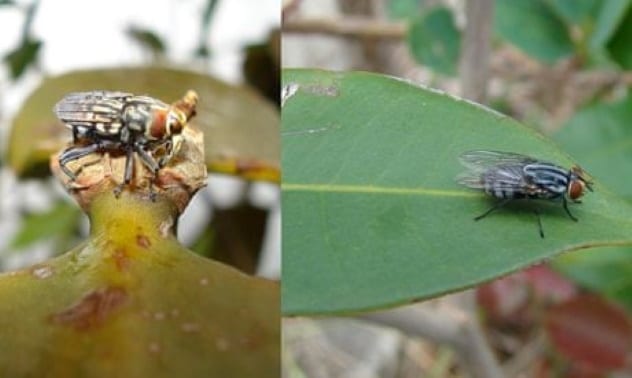
As you should have guessed, the aptly named fly-mimicking weevil (Timorus sarcophagoides) is weevil that looks like a fly, specificity flesh flies from the Sarcophagidae family. The weevils’ body coloration and markings are similar to the flies’. They also have two large reddish dots on their thorax that look like the eyes of a fly.
The fly-mimicking weevil executes the mimicry so well that it even moves and rubs its legs together as flesh flies do. The idea is to trick potential predators into believing they are flesh flies.
You see, flesh flies are very fast, and birds generally avoid chasing after them because they are difficult to catch. The fly-mimicking weevil is much slower, so the disguise is necessary to make the birds think they are not easy prey. As a result, potential predators just move on to invest their time on other, “slower” insects.
However, the ruse does not always work on entomologists, who will often want to inspect the weevil. The weevil quickly realizes the game is up and just retracts its legs and rolls over until it falls to the ground, pretending to be dead. A very clever insect we have here.[9]
1 Nymphister Kronaueri Masquerades As Part Of An Army Ant
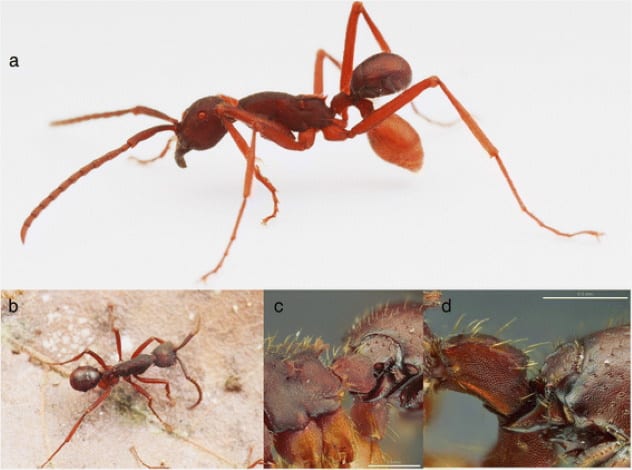
Some new creature always pops up whenever we think we’ve seen it all. What do we make of the so-called ant lovers (aka myrmecophiles), a group of organisms that just love to hang around ants? Scientists are not sure why they do, but they think it has a lot to do with the fact that ants are good at finding food.
Nymphister kronaueri is one of these ant lovers. The beetle attaches itself in between the thorax and abdomen of army ants without being noticed. The beetle gets a free ride, along with the free food it probably already receives from the ants. Scientists have also observed that the beetle prefers to attach itself to the bodies of medium-sized ants. They do not know why but think it has to do with N. kronaueri wanting to trick the ant into thinking it is actually a part of the ant’s abdomen.[10]
Read about more amazing examples of animal mimicry on 10 Devastatingly Deceptive Or Bizarre Animal Mimics and The 10 Most Devious Ant Mimics.








